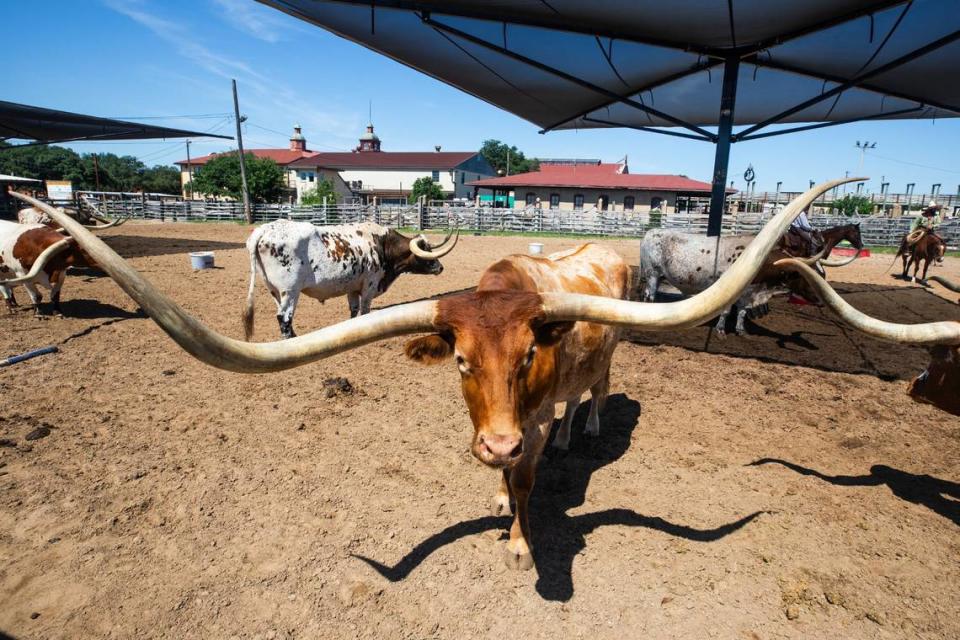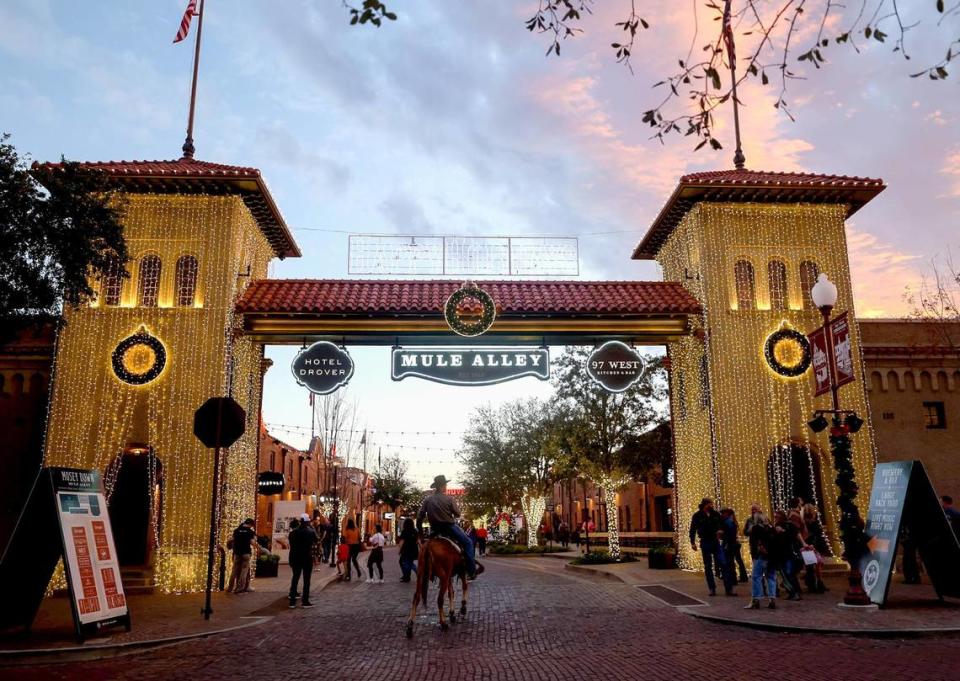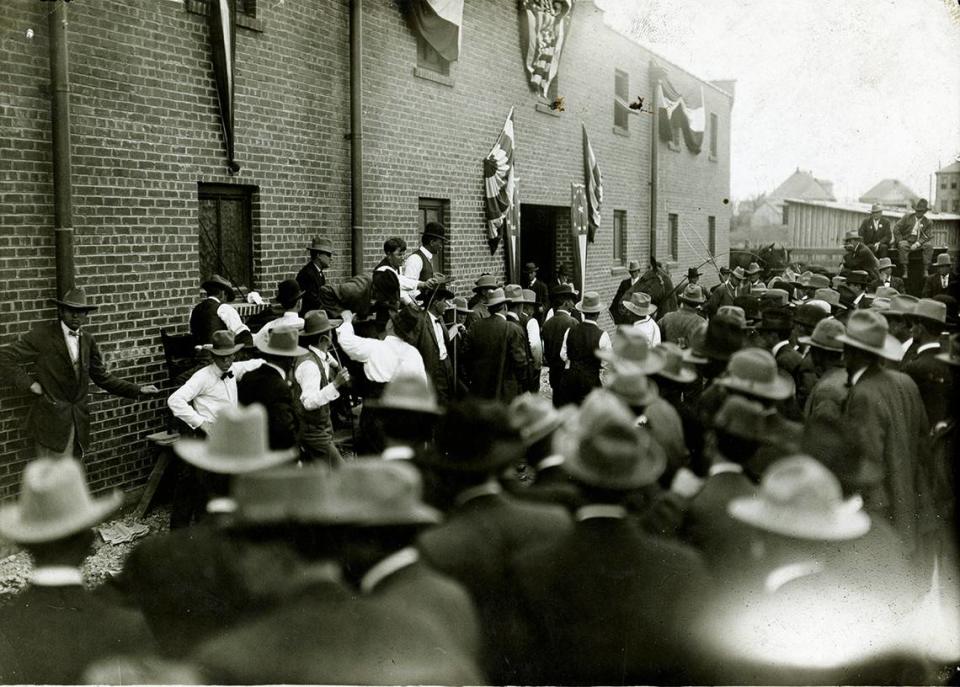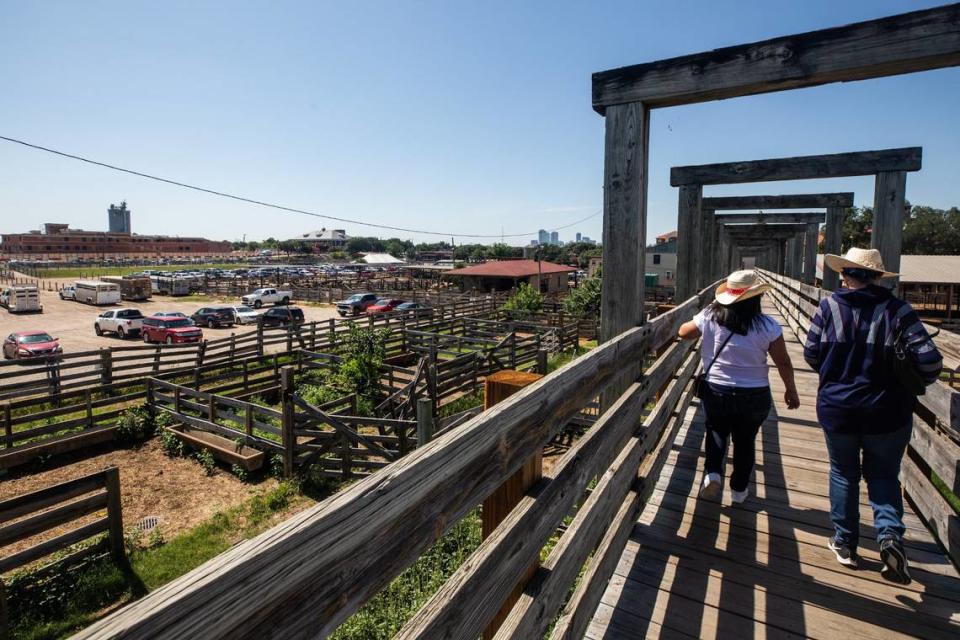
While city leaders have been mostly impressed so far by a proposed nearly $1 billion expansion of the Fort Worth Stockyards by its owners, the public reaction on social media has been less than universal enthusiasm.
“I’m not ready for Nashville 2.0,” wrote one commenter on Facebook last week. “More Dallasing our Fort Worth!!” bemoaned another.
Some question whether the proposal to add 300,000 square feet of commercial space, apartments, hotels, underground garages and other amenities on what’s now largely surface parking would jeopardize the historic authenticity of the Stockyards. Some worry about more crowds and traffic.
“This is not Disney world!! Years of tradition and heritage need to be protected at all costs,” said another reader on Facebook.

So far, the owners Majestic Realty Co. and The Hickman Companies have been tight-lipped on what would be the second phase of redevelopment, following the opening of Mule Alley and Hotel Drover in 2021. Their proposal is scheduled to go before the City Council on June 25 for consideration of a complex incentives package that would be required for their minimum investment of $630 million.
But in many ways, the initial concerns among fans of the Stockyards echo the reactions a decade ago when the same owners unveiled their plans for Mule Alley, which by comparison was a much smaller project than what’s on the table now. Back then, it was some of the decision makers in city government who were most skeptical. A city commission even rejected the required zoning changes for Mule Alley, saying the ambitious redevelopment needed more scrutiny, before the City Council ultimately green-lighted the project.
Others feared a loss of the district’s historic character.
The opposition in 2014 seems remarkable today, given how popular Mule Alley is with its boutiques, restaurants and live music bars, anchored by the luxury Hotel Drover. Overall visitor counts to the Stockyards have tripled to an estimated 9 million a year.


One of those detractors was Steve Murrin, known as the “mayor of the Stockyards” who led an early fight to revitalize the historic complex decades ago.
Murrin was skeptical developers would preserve the area when initial plans for redeveloping it were proposed. Ten years later, his position is completely different.
“I take it all back,” he said.
Murrin points to how what was left of the old horse and mule barns was preserved during construction. Some 500,000 bricks were hand-laid, century-old windows were restored, and old cattle troughs and fire doors were repurposed. Murrin said he gained confidence in Majestic Realty Co. after seeing the company make major investments in the Stockyards.

Murrin said he is supportive of the redevelopment happening now, particularly the restoration of the abandoned Armour meatpacking company building for an energy company’s new headquarters. Hundreds of new apartments are planned for adjacent vacant.
For five decades, Murrin has believed in a vision of the Stockyards as a thriving tourist destination— a vision that continues to come to fruition.
“A rising tide floats all boats, and I’m blessed to have my boat in the pond,” he said.
‘There were a lot of unknowns then’
Fort Worth council member Carlos Flores has represented the Stockyards and surrounding neighborhoods since 2017. He said this second phase of Stockyards redevelopment would be transformative for the area.
He said he is excited for the new parking infrastructure, which would add at least 1,300 spaces in underground garages, along with new hotels and commercial space.
Flores was chair of the zoning commission when the Mule Alley project was proposed. He called that process a formative experience in his public service career.
“There were a lot of unknowns then, and a lot of new territory to cover,” he said.
Now, he is a firm believer in the power of public-private partnerships. He said his constituents have confidence in redevelopment after seeing the results of phase 1, and know what to expect from the ownership partners if phase 2 moves forward.
“There’s a lot happening there, a lot of redevelopment,” Flores said. “The pace has increased, of course, now with the announcement of phase two, and phase one has been proof that the redevelopment direction was valid.”
Flores said knowledge gained working on phase 1 has made plans for phase 2 more detailed.
Majestic and The Hickman Companies formed a partnership, Fort Worth Heritage LLC, for the project. M2G Ventures, a Fort Worth-based real estate and investment firm, would collaborate as well. The firm served as the exclusive retail partner on Mule Alley.
In a statement, the owners and M2G Ventures said they are “proud of the successful partnerships we established 10 years ago with the City of Fort Worth and Tarrant County for the preservation, adaptive reuse and further development of the Fort Worth Stockyards.
“Keeping the historic Stockyards vibrant, authentic, accessible and sustainable has been and remains the collective goal of all of the parties,” the statement said.
The companies suggested they would reveal more details after the City Council considers the incentives package.
In contrast to the Mule Alley project, there are significantly fewer existing buildings to renovate in the area for phase 2. Much of the land on the north side of Exchange Avenue, behind Billy Bob’s Texas and Cowtown Coliseum, is open parking or livestock pens.

Flores said as the city’s population grows, so must its opportunities.
He described himself as “hands on” at the Stockyards, and said he’s working to alleviate residents’ concerns about potential increases in traffic and other growing pains if phase 2 moves forward.
Flores said he is working with Trinity Metro to increase public transportation to the Stockyards and potentially run a route in the area. There is not a timeline for when that might happen.
Flores said he is optimistic the council will vote to approve the tax incentives for the project.
“We’re very supportive of what’s being proposed,” he said.
‘Success breeds success’
If phase 2 moves forward, it would likely have a significant impact on Fort Worth’s tourism industry and neighborhoods surrounding the Stockyards.
Annette Landeros, president and CEO of the Fort Worth Hispanic Chamber of Commerce, said new development could bring more visitors to the Historic Northside corridor, allowing tourists to experience a slice of the area’s Latino culture.
Landeros said it’s important for the city to be transparent about how growth will impact residents near the Stockyards, some of whom may be uncertain of how traffic and new housing could affect their neighborhood.
Mitch Whitten, chief operating officer of Visit Fort Worth, said the Mule Alley redevelopment successfully attracted more tourists and locals to the Stockyards.
He also said the owners did a great job with Mule Alley, creating retail space for landmark Western brands and attracting more Western events to Cowtown Coliseum.
To Whitten, expanding the city’s entertainment districts is a natural next step as the downtown convention center gets overhauled and the region prepares for larger regional events, like the 2026 World Cup.
“Success breeds success,” he said.
EMEA Tribune is not involved in this news article, it is taken from our partners and or from the News Agencies. Copyright and Credit go to the News Agencies, email news@emeatribune.com Follow our WhatsApp verified Channel









